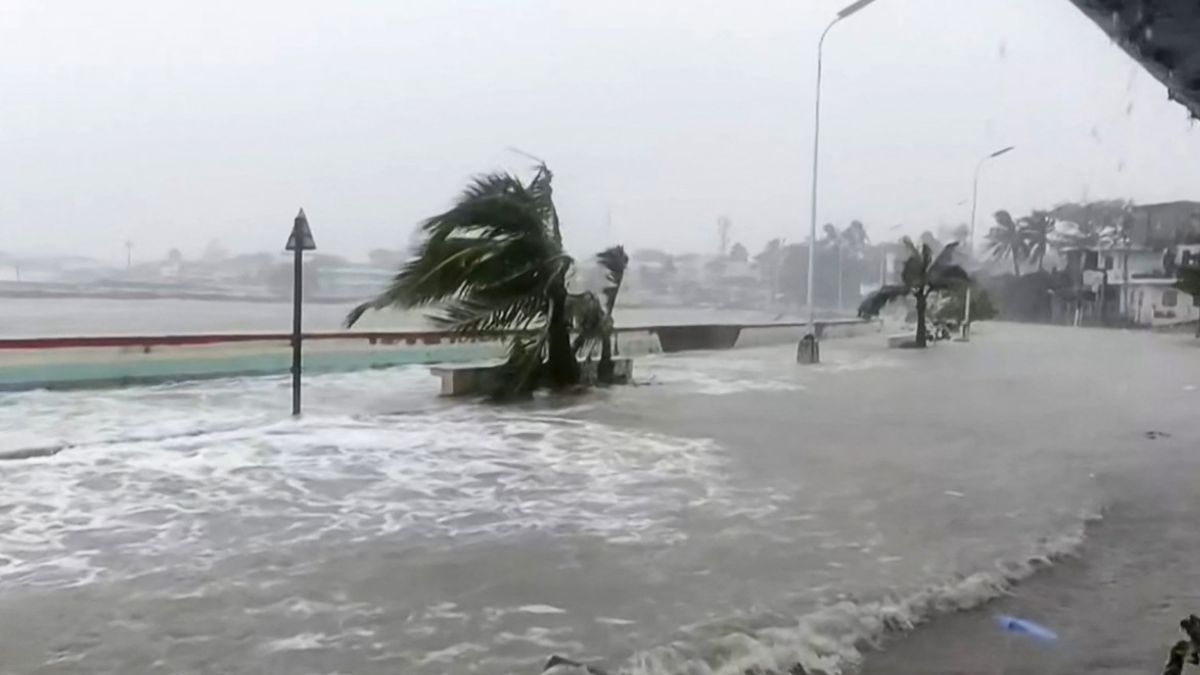Typhoon Fung-wong, a massive storm spanning almost the entire Philippines, reached super typhoon strength on Sunday, just hours before its expected late-night landfall. The state weather service reported that Catanduanes, a small island expected to take a “direct hit”, was already being battered by fierce winds and heavy rain early in the morning, with powerful storm surges sending waves crashing over coastal streets.
Moving westward, Fung-wong carried sustained winds of 185 kilometres (115 miles) per hour near its centre and gusts reaching 230 kph, according to officials. “The waves started roaring around 7 am (2300 GMT Saturday). When the waves hit the seawall, it felt like the ground was shaking,” said Edson Casarino, 33, a resident of Virac town in Catanduanes. “Heavy rain is pouring now, and I can hear the wind whistling.”
Ahead of the storm’s arrival, some residents secured their homes using ropes and weights to keep roofs from being torn off. “They decided to do our tradition of strapping down the roofs with big ropes and anchoring them on the ground so they won’t be blown away by the wind,” said provincial rescue official Roberto Monterola. storm surge, strong winds, coastal flooding, local preparation
Evacuations are underway as heavy rainfall expected
In Sorsogon, located in southern Luzon, several residents took shelter in a church for safety. “I’m here because the waves near my house are now huge. I live near the shore, and the winds there are now very strong,” said Maxine Dugan on Saturday evening. Meanwhile, in coastal Aurora province, where Fung-wong is forecast to make landfall late Sunday or early Monday, rescuers were moving door to door urging residents to seek higher ground. Aurora province, Sorsogon, evacuation, landfall, safety measures
Government meteorologist Benison Estareja warned that the typhoon could unleash about 200 millimetres (eight inches) or more of rainfall, raising the risk of severe flooding and overflowing river basins. Scientists caution that such storms are becoming more intense due to human-driven climate change, with warmer oceans fuelling rapid typhoon strengthening and a moisture-rich atmosphere producing heavier rainfall. heavy rain, flooding, river overflow, climate change, meteorology


)

)
)
)
)
)
)
)
)



